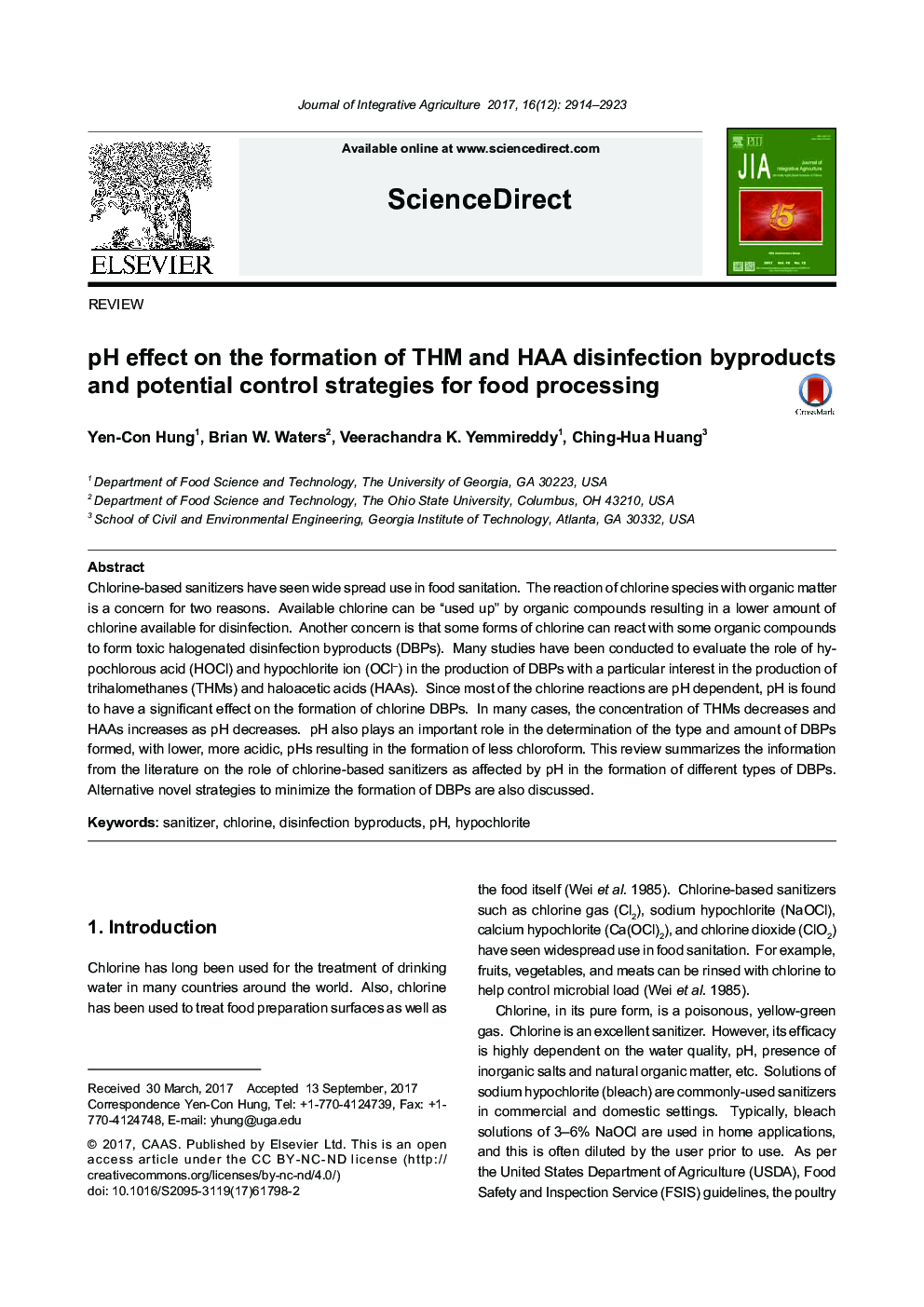| Article ID | Journal | Published Year | Pages | File Type |
|---|---|---|---|---|
| 8875804 | Journal of Integrative Agriculture | 2017 | 10 Pages |
Abstract
Chlorine-based sanitizers have seen wide spread use in food sanitation. The reaction of chlorine species with organic matter is a concern for two reasons. Available chlorine can be “used up” by organic compounds resulting in a lower amount of chlorine available for disinfection. Another concern is that some forms of chlorine can react with some organic compounds to form toxic halogenated disinfection byproducts (DBPs). Many studies have been conducted to evaluate the role of hypochlorous acid (HOCl) and hypochlorite ion (OClâ) in the production of DBPs with a particular interest in the production of trihalomethanes (THMs) and haloacetic acids (HAAs). Since most of the chlorine reactions are pH dependent, pH is found to have a significant effect on the formation of chlorine DBPs. In many cases, the concentration of THMs decreases and HAAs increases as pH decreases. pH also plays an important role in the determination of the type and amount of DBPs formed, with lower, more acidic, pHs resulting in the formation of less chloroform. This review summarizes the information from the literature on the role of chlorine-based sanitizers as affected by pH in the formation of different types of DBPs. Alternative novel strategies to minimize the formation of DBPs are also discussed.
Related Topics
Life Sciences
Agricultural and Biological Sciences
Agricultural and Biological Sciences (General)
Authors
Yen-Con Hung, Brian W. Waters, Veerachandra K. Yemmireddy, Ching-Hua Huang,
